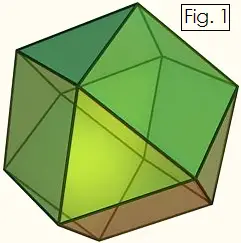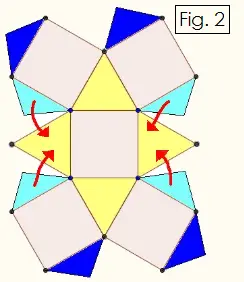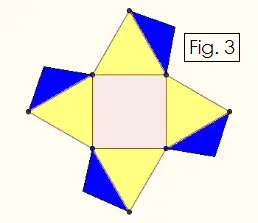Copyright © Had2Know 2010-2025. All Rights Reserved.
Terms of Use | Privacy Policy | Contact
Site Design by E. Emerson
Constructing Geometric Solids:
Cuboctahedron
A cuboctahedron (or cubocta) is a 14-sided solid figure in which eight of the faces are equilateral triangles and six of the faces are squares. One way to think about a cuboctahedron is that it is a cube whose eight corners have been sliced off. It is also the "dual" the rhombic dodecahedron, since the vertices of the cubocta correspond to the faces of the rhombic dodecahedron and vice versa. The name "cuboctahedron" comes from the fact that it has six square faces (cube), and eight equilateral triangle faces (octahedron). You can construct a cuboctahedron with stiff paper and glue by following the instructions and pattern below.


Next, cut out the shape shown in Figure 3 below. Crease all the edges upward. Do not glue any tabs yet. This piece fits onto the piece you made above and completes the cuboctahedron. Fit them together tucking the dark blue tabs inside.

© Had2Know 2010
